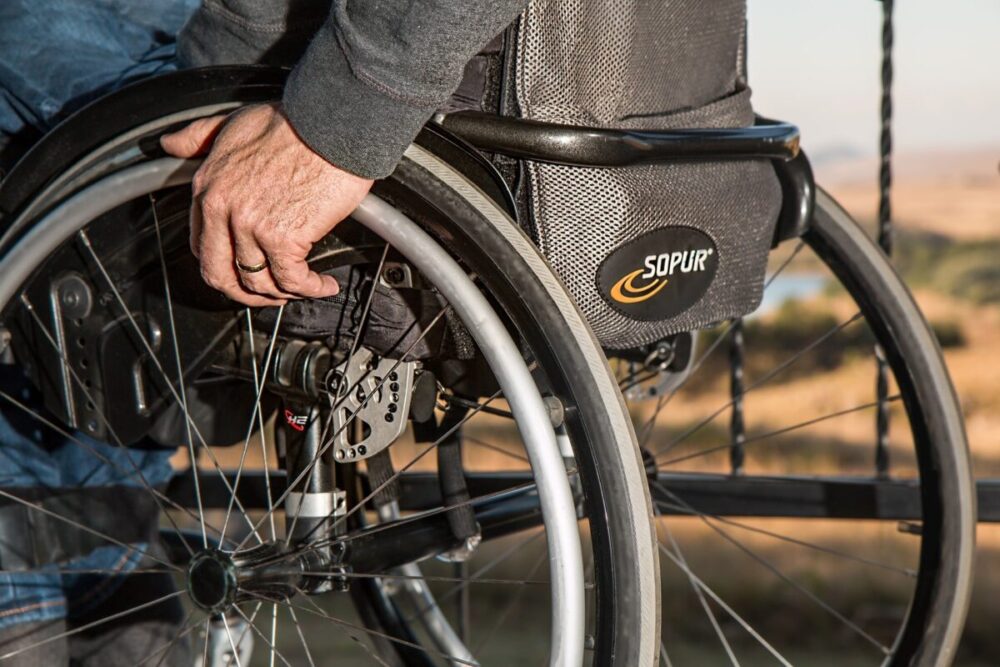When in good shape, it is not uncommon to take the value of good health and life for granted. It is when one of these is threatened that most people start seeing expensive cars, houses, and investments as a plus. As we go ahead with our daily routines, we can encounter injuries that may leave us physically or mentally disabled. Depending on the severity of the injury or disability, treatment, and management of the condition can range from affordable to extremely costly.
Well, for obvious reasons, disability is nothing anyone wants to encounter in life. Apart from exerting a toll on your finances, it can also have a huge impact on one’s quality of life. It can change your life forever in so many ways, whether short-term or long-term. This is especially because you may no longer be able to fend for yourself and your family. However, having disability insurance can make life a little bit easier for the sufferer and their loved ones. Below, we explore the various types of insurance for disabled individuals and how to get one.

The Cost of Disability and Insurance
Living with a disability comes at an extra cost. Apart from care and treatment, the person with the disability may require extra amenities, services, and products to make his or her life easier. For instance, a lot of disability victims need service dogs and emotional support animals to help them with their day-to-day life activities while offering companionship. The fact that the individual may no longer be able to work makes matters even worse. It makes life costlier for the person with a disability as well as their loved ones. This is why it is very important to have disability insurance. Wondering how much it costs? Well, in a nutshell, the overall cost of the disability covers revolve around factors like:
- Health Status
- Age and gender
- Coverage amount
- Occupation and income
- Benefit and elimination period
With that having been mentioned, let’s now take a look at various kinds of disability insurance and how you can get them.

1. Social Security Disability Insurance
Even though you are disabled, you will need money to pay for daily expenses, medical care, and maintain a relaxed living standard. If you have a disability in the US and pay your taxes, you may qualify for social security disability benefits. However, the amount you qualify for may depend on various factors, including your age and the nature of your disability, among others. As the lawyers at the Laporte Law Firm point out, denied SSDI claims are not anything new. If you go to their website, you will realize that a denied claim is not the end of the road for you. With expert legal representation, you can get the SSDI benefits you so much deserve in the trying times after suffering an event that leaves you disabled. With these benefits, it makes life easier for you and your family as you seek to get back on your feet or get used to your new situation. Social security disability benefits can be applied online once you meet the eligibility criteria, often after 6 months of disability.
2. Short-Term Disability Insurance
This one is usually provided by employers to cushion the employee from the effects and costs of disability for a limited time frame. It usually comes in part of the person’s paycheck, often 60-80% of the basic salary before tax. It caters for disabilities of up to 12 months and may take just a few days to a couple of weeks for the benefits to be paid out. To get STDI, you will want to check with your employer to see if it’s included alongside the other basic employment benefits. Individual policies are also available and could be ideal for people who work in high-risk environments.

3. Long-Term Disability Insurance
If you become too ill or disabled that you can’t work, you may qualify for long-term disability insurance benefits. This policy provides cover longer than short-term disability policies, usually for 2,5, or up to 10 years. Some may provide cover until retirement, giving you a monthly benefit of up to 60% of your gross pay. Annually, long-term disability insurance costs may range between 1-3% of what you earn in a year. You will start enjoying the benefits after three months since the disability. Once you recover, you will stop receiving benefits. Some of the ways to get LTDI coverage include the following:
- When your job does not pay for the coverage, you can buy the insurance through your employer’s broker, and they will offer it at a group rate.
- You can get your coverage through a professional association. Most professional groups provide this cover to their members at a group rate.
- In many states, employers are required to offer coverage. So sign up for employer-sponsored policies at your workplace. Most employers who provide this cover cater to most of the premiums if not all.

4. Mortgage Disability Insurance
The thought of being kicked out of your own home for not keeping up with the payments is every homeowner’s nightmare. This kind of coverage comes through for you when you cannot pay for your mortgage plan payments due to a disability. It is ideal for those who do not qualify for life insurance coverage.
5. Business Overhead Disability Insurance
Even in your sickbed, your business has to stay up and running, and you have to make ends meet regardless. As you can tell from the name, BOD insurance is created for business people who become ill or disabled while carrying out business operations. Accidents are unpredictable, even in the workplace. Business overhead disability insurance can have your rent, utilities, salaries, taxes, and other business expenses catered for until you recover.

6. Self-Insurance
How many times have you paid for premiums, and you have never enjoyed the benefits? Well, self-insurance can be an option when you want to cut costs with insurance premiums. It means keeping some money aside for emergencies in your savings account. In case of an accident that leads to disability, you can use this money to cater to your immediate needs as you recover.
As earlier iterated, life is full of uncertainties and unpredictable situations. Disability doesn’t come knocking at your door. The above are just a few ways to cushion yourself in case the worst happens and you end up in a wheelchair, without vision, or with any other kind of disability that keeps you from work.





